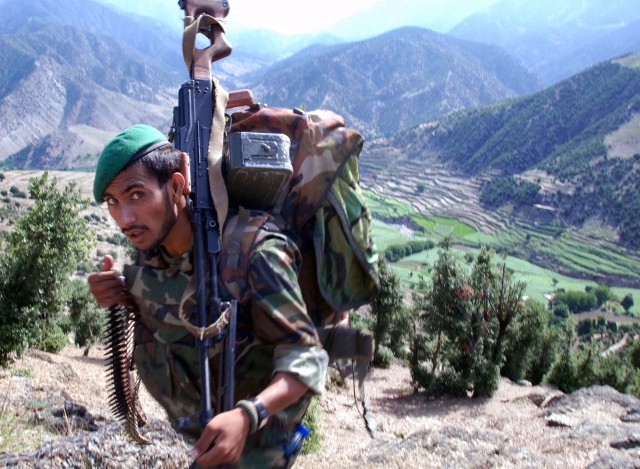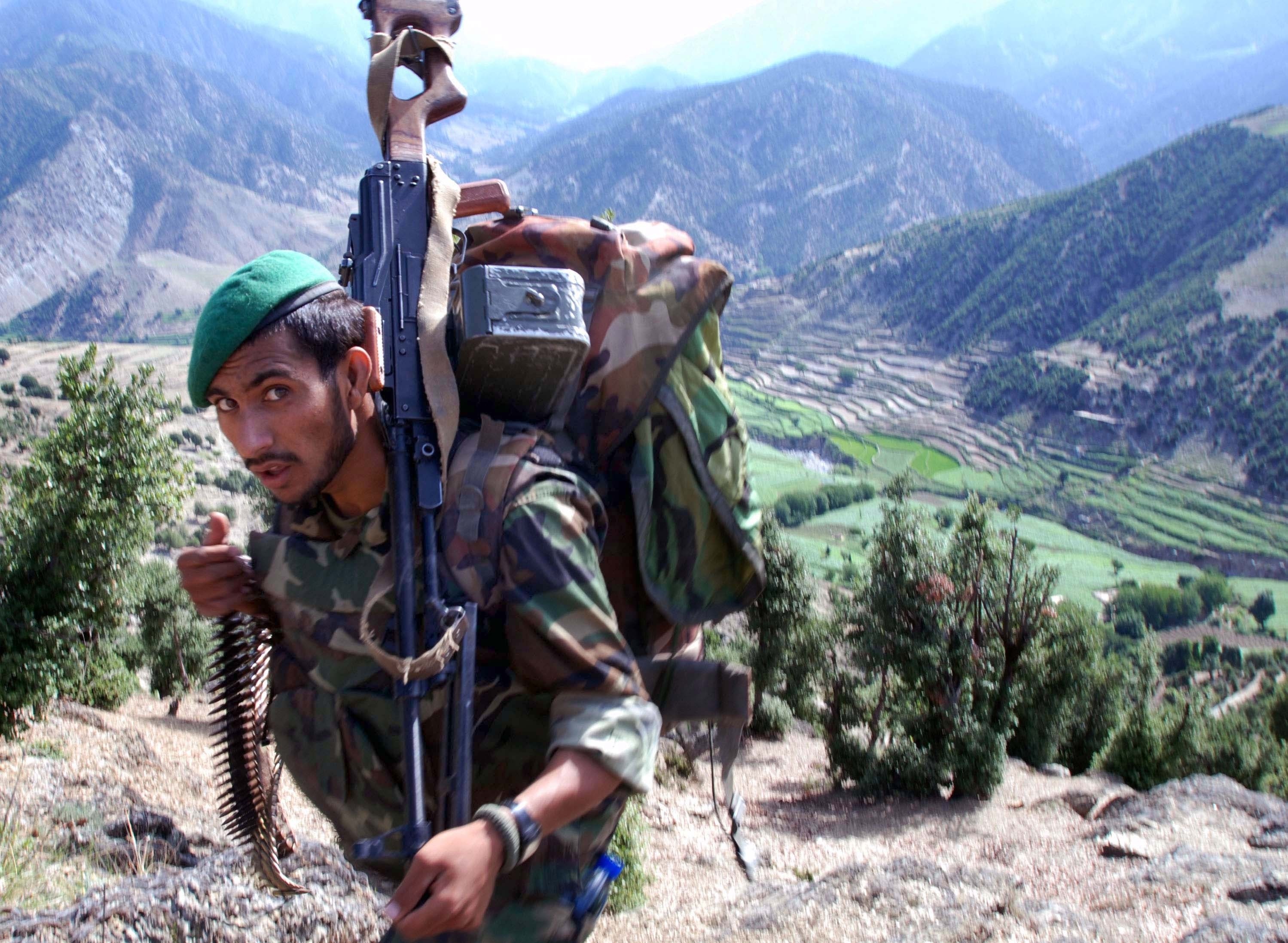WASHINGTON (American Forces Press Service, Oct. 3, 2007) - Closer cooperation between coalition troops and Afghan security forces is helping stem violence that's been on the rise in eastern Afghanistan, the commander of an international task force operating there told Pentagon reporters yesterday.
But Army Col. Jonathan Ives, commander of Task Force Cincinnatus, also attributed many inroads being made to the Afghan people themselves. As they develop more confidence in their national security forces and in the coalition's commitment to their region, they're becoming partners in stabilizing the region, he said.
Col. Ives cited Operation Naruz Hallah, a mission planned and led by the Afghan National Army to focus on threats that had been escalating in the isolated Kapisa province.
His own task force, with includes about 1,000 troops from the United States, New Zealand, South Korea and Turkey operating in Regional Command East under Combined Joint Task Force 82, had been working up a plan to address the threat when the Afghans approached them with their own plan in July. The Afghans shared the coalition's concern about escalating violence. Left unchecked, Col. Ives said, it had the potential to affect Kabul and the international assistance community.
Opeation Naruz Hallah essentially involved positioning troops in the province's most-populated valleys to block positions and known exit routes used by foreign fighters and insurgents that established a support base there, Col. Ives explained. The operation's goals were to:
-- Separate the enemy from the population;
-- Provide development to demonstrate coalition commitment to the region;
-- Establish an enduring presence with the Afghan National Army with coalition force partnering; and
-- Mentor the national police while providing them substations on a north-south route and the side valleys of the major population centers.
But in addition to confronting the enemy opposition, Col. Ives said, it also encouraged closer cooperation between coalition forces and the Afghan police and army and won confidence from the Afghan people.
"The strength of Task Force Cincinnatus is not our strength of numbers of coalition forces, but our alliances," he said. "These included the Afghan National Army and the Afghan National Police and developing relationships in the valleys to promote the belief that the Afghans take the lead to help the Afghanistan -- to help Afghanistan and separate the populace from the enemy."
Col. Ives called improved public support one of the biggest successes of the operation. "Many of the locals came forward to identify the enemy and their caches of arms to the Afghan National Army," he said. "This allowed the army to fulfill their commitment to the people and the president of Afghanistan to ensure and preserve every life when targeting the criminals and the insurgents."
These efforts, with support by the population, continue to provide leads on criminals throughout the local area, he said.
Col. Ives pointed to development projects under way in Kapisa province as another big incentive in winning popular support for the Afghan National Army, Afghan National Police and coalition. These projects, being conducted largely through the local provincial reconstruction team, encourage the population to step forward in identifying criminal and insurgent operatives and the improvised explosive devices they're starting to emplace, he said.
"We are continuing to reinforce with the locals that are there that if they will help us defeat the enemy and separate the enemy -- attack the Taliban in their strongholds where they are hiding and not in the villages, ... point those out and tell us where they are -- that we will continue the development," Col. Ives said.
Development efforts range from building new schools and rebuilding schools that have been burned to rebuilding roads and repairing the damaged district center. Other projects aim to create employment through poultry farming and, for women, weaving.
"All these things we are bringing in there to help them are being well received by the elders that run and support the populace there," Col. Ives said. "And they have been a great help in helping us identify the IEDs."
Collectively, they demonstrate coalition commitment to the region and build alliances critical to building Afghan's army and police forces and cracking down on violence, Col. Ives said.
He called growing cooperation in the region another step forward toward stabilization of the region. "There's a lot of work to do," he conceded, but insisted that a peaceful Afghanistan is within reach.
"Together with the NATO and coalition partners and the support of the international community and Afghan people, we're going to overcome the devastation that this country has endured for 25 and 30 years," Col. Ives said. "And we will overcome all these challenges and bring peace and stability and development to the future of Afghanistan."


Social Sharing